The national parks in Alaska are magical places of snow, ice and glaciers. Those who visit this state are looking for an escape from the city or a chance to see landscapes seemingly untouched by humans. Wildlife like caribou, grizzlies, moose and polar bears roam the tundra throughout the year, migrating from one place to another. Birdwatchers enjoy exploring the summer nesting locations of many species.
Adventurers in Alaska can test their skills by dogsledding, snowmobiling, snowshoeing, skiing, fishing, hunting and hiking. And if you travel to Alaska from September to April, there’s a chance of seeing the Northern Lights on display in the night sky. Alaska is a magical place that attracts people to it and keeps them coming back. The experiences you have and the friends you make will stay with you forever.
Contents
- National Parks In Alaska
- Top 3 Tours
- Alaska’s National Parks
- National Parks And Preserves
- National Preserves
- National Historic Areas
- National Historical Parks
- National Heritage Areas
- National Monuments and Preserves
- National Monuments
- Wild and Scenic Rivers
- Alagnak River
- Noatak River
- Salmon River
- Selawik River
- Kobuk River
- Alatna River
- John River
- Tinayguk River
- North Fork Koyukuk River
- Ivishak River
- Wind River
- Sheenjek River
- Unalakleet River
- Andreafsky River
- Tlikakila River
- Chilikadrotna River
- Mulchatna River
- Aniakchak River
- Gulkana River
- Delta River
- Fortymile River
- Charley River
- Birch River
- Beaver River
- Nowitna River
National Parks In Alaska
Top 3 Tours
- Wilderness, Wildlife and Glacier Experience – See belugas, brown bears, wolves and bison on this wildlife-watching tour.
- Kenai Fjords National Park Cruise – Spot whales and glaciers on an incredible cruise on a high-speed catamaran through the Kenai Fjords National Park.
- Talkeetna: Denali Experience Flight (with Optional Landing) – Fly up the Tokositna Glacier and close to the summit of Denali on this incredible flightseeing adventure.
Alaska’s National Parks
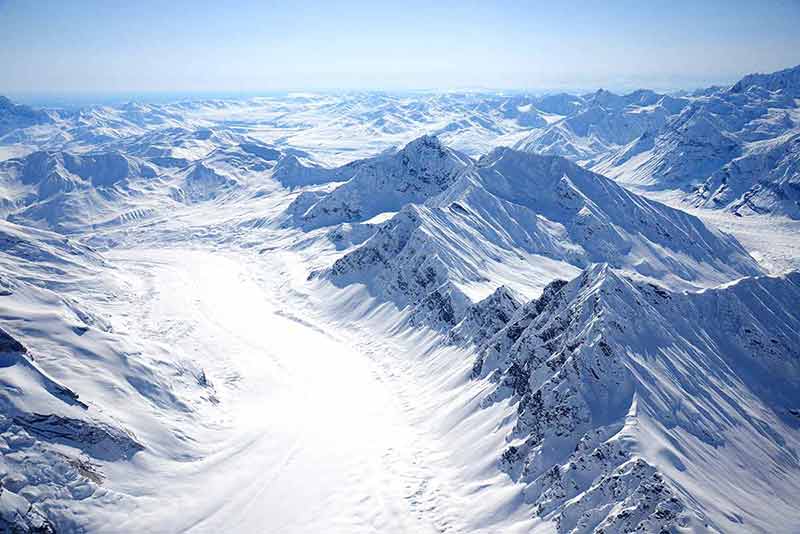
1- Kobuk Valley National Park
The Kobuk National Park is a remote area that contains many archaeological sites.
Caribou migrate through the river corridor, and many birds nest in the park, attracting wildlife and bird watchers who hike through the area.
The river is an excellent place to float, and many visitors to the park float downriver and camp on the dunes.
The Great Kobuk Sand Dunes are the biggest active dunes in the Arctic. The native Inupiaq live here, subsistence fish, and live off the land the way they have for many generations.
In July, the mosquitos are bad, while August brings the biting flies.
Visitors to the Kobuk National Park should visit the Northwest Arctic Heritage Center, a free museum where people can learn about the Arctic ecosystem and Inupiaq culture.
2- Kenai Fjords
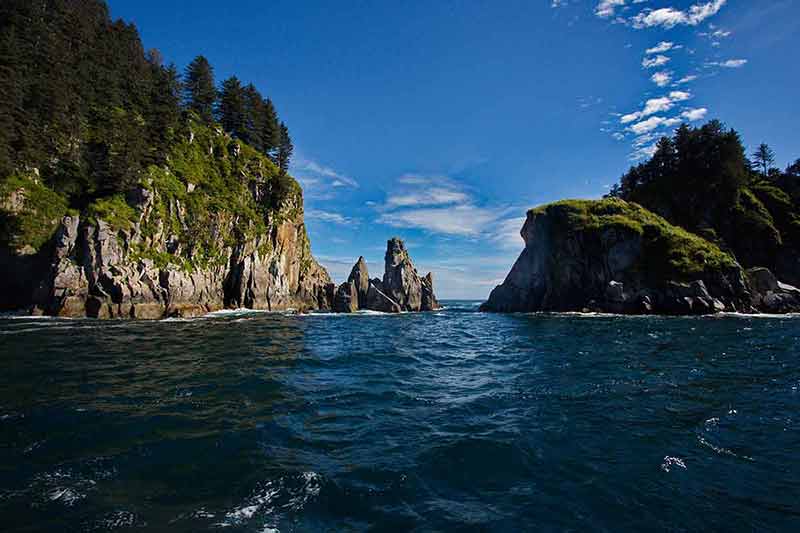
Kenai Fjords National Park lies adjacent to the small seaside town of Seward.
This town is the jumping-off point for visitors who want to explore the fjords of Kenai.
Although the town is quiet most of the year, crowds flock to the area in August for salmon and halibut fishing.
The Silver Salmon Derby is held each August, based out of Seward.
Visitors to the park can take boat tours through the fjords, exploring the rich landscape and beautiful vistas.
On boat tours, people may see humpback whales, orcas, puffins, harbour seals, sea lions and sea otters.
Adventurers can rent sea kayaks to explore private coves for beachcombing, view nesting bird colonies, and find tidewater caves.
For more about Alaska read:
National Parks And Preserves
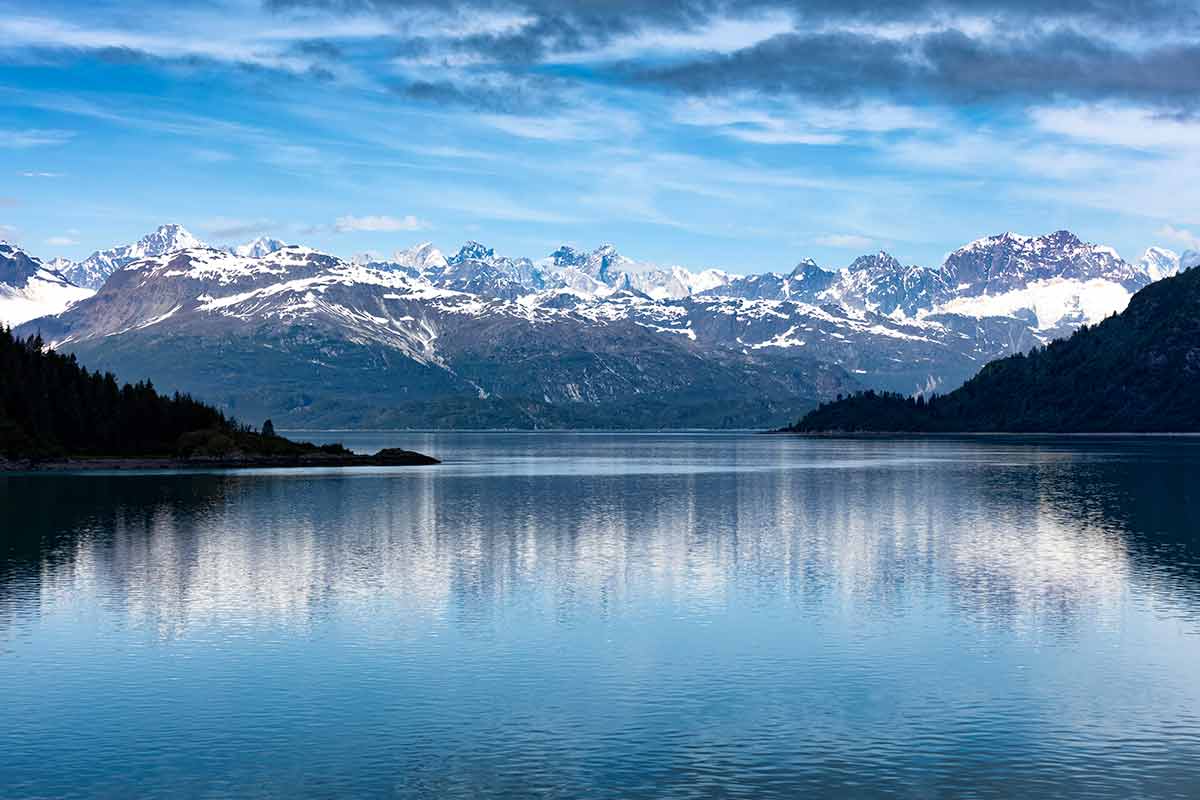
3- Gates Of The Arctic National Park And Preserve
Gates of the Arctic National Park and Preserve is within the Arctic Circle.
The park and preserve combined are four times bigger than Yellowstone National Park.
The Western Arctic Caribou Herd, black bear, muskox, moose, wolves, wolverines, foxes and grizzly bears wander through the park, depending on its resources.
Native people have lived in the area for thousands of years and continue to subsist in the region, using the park’s resources for survival.
Visitors can explore the six Wild and Scenic Rivers found within the Gates of the Arctic National Park by floating and fishing in the summers.
Dogsledding is a popular sport here in late winter.
Others who visit this park want to find a remote wilderness, far from other humans, and backpack into the tundra during the spring, summer and fall.
No park services are available at Gates of the Arctic, so you’ll need to take care of yourself. Winters in the park are brutally cold, and travel into the park ceases between November and March. You may like this tour.
4- Katmai National Park And Preserve
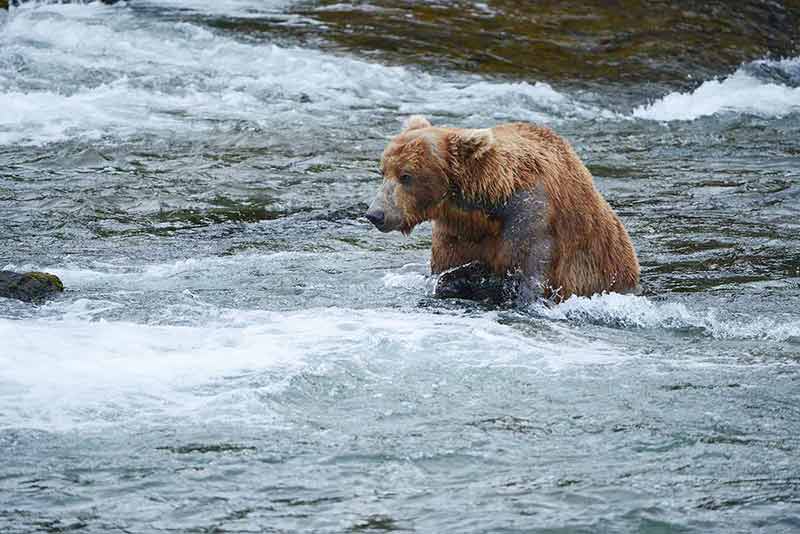
The Katmai National Park and Preserve protect several thousand years of human history and a beautiful volcanic area.
A large population of brown bears calls this park’s four million acres (around two million hectares) home.
In addition, the Bristol Bay sockeye salmon travel upriver every year to spawn.
This salmon run is one of the world’s largest, making it important for the economy. Visitors to Katmai enjoy backcountry hiking and camping.
The park maintains only six miles of hiking trails, so most hiking is done off the trail.
You can see brown bears and go birdwatching in the wilderness.
Floating the rivers and fishing are also popular activities in this park.
For Cultural Walks, rangers at Katmai are available to visitors to explore the Brooks River archaeological sites.
This area is a National Historic Landmark listed on the National Register of Historic Places Archaeological District.
5- Lake Clark National Park And Preserve
The Lake Clark National Park and Preserve is a place of volcanoes, salmon, bears and pristine lakes.
Take a boat or plane to reach this national park.
Guided bear viewing trips are a popular activity at this park and preserve.
Chinitna Bay, Crescent Lake, Silver Salmon Creek, Shelter Creek, and Tuxedni Bay are the best places to see the resident brown bears.
During salmon runs, Crescent Lake and Silver Salmon Creek also offer excellent sportfishing locations.
Backcountry backpacking is also available; however, hikers should be cautious with the high density of bears in the area.
Visitors should not hike or camp in the Crescent Lake area because of the dense vegetation and high likelihood of running into and startling bears.
At the lake, you can go bear-watching from boats and kayaks.
The Lake Clark National Park and Preserve protects the natural resources and the homeland of the native Dena’ina people who have lived here for thousands of years.
6- Denali National Park And Preserve
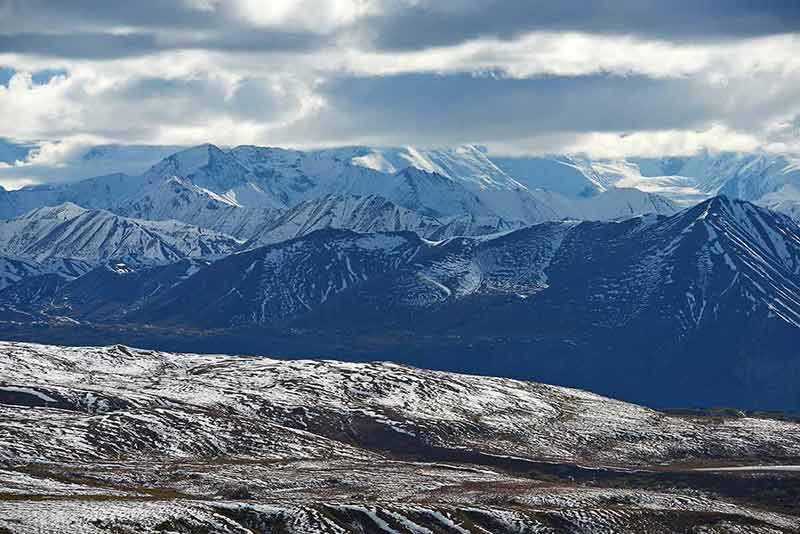
The Denali National Park and Preserve contain six million acres (2.5 million hectares) of land that moves from the low-elevation forest through the tundra into snowy mountains.
North America’s highest mountain, Denali, is in this park and reaches 20,310 feet (6190 m), with only one 92-mile (148 km) road running through this park.
Cars can only drive the first 15 miles (24 km) in a private vehicle, while park visitors can hop on a bus to take a wildlife-watching tour from May to September.
The park was created to protect the Dall Sheep, but its purpose has continued to grow as its acreage has grown.
Park guests can hike some backcountry trails, but much of the landscape is closed to humans.
The Denali National Park and Preserve attracts extreme adventurers who enjoy mountaineering, climbing, skiing, dog sledding, and other outdoor sports. Check out these tours:
7- Glacier Bay National Park And Preserve
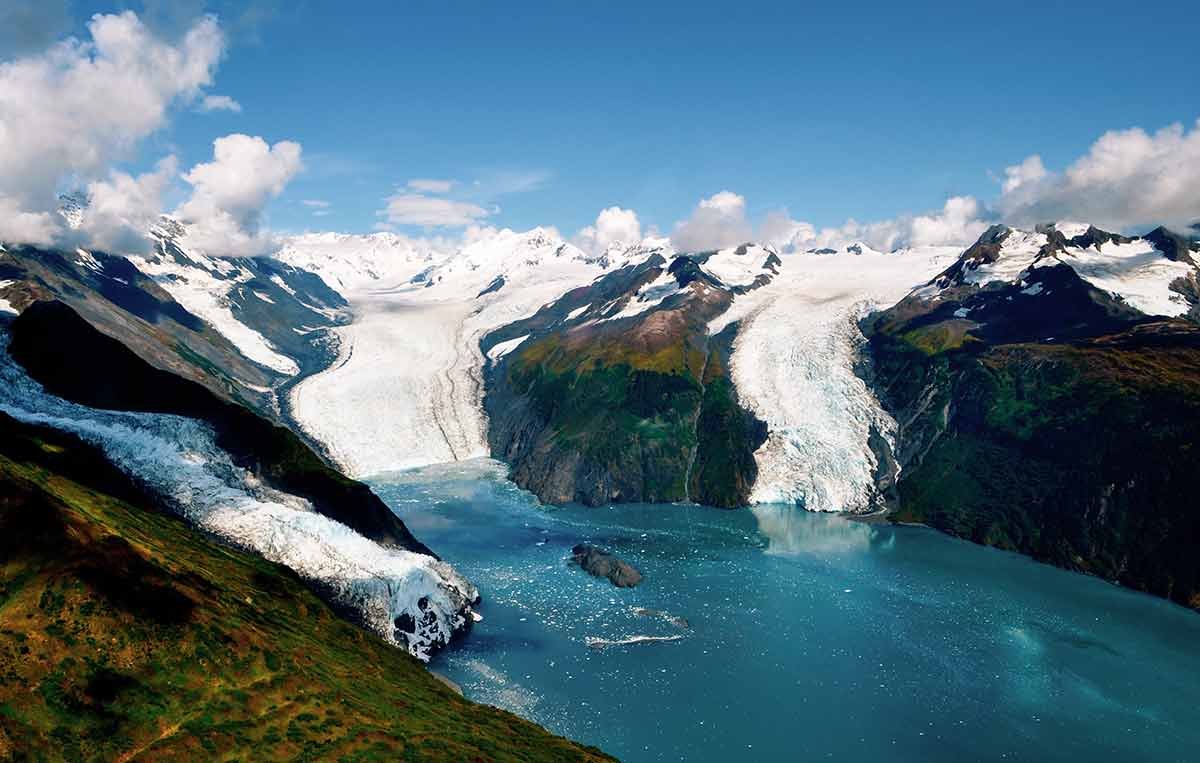
The Glacier Bay National Park and Preserve is a Biosphere Reserve and World Heritage Site.
This park encompasses land and ocean resources that draw many people to this park each year.
Take a boat to get up close to appreciate the size and, occasionally, the calving of a glacier and to see the beautiful landscape left behind by glaciers that have retreated.
Fjords with clear waters wind through the land, surrounded by lush vegetation with diverse wildlife and birds in the homeland of the Huna Tlingit native people.
Visitors should check out the Xunaa Shuká Hít, the Huna Ancestor’s House, where they can learn about the culture and history of these people whose ancestors subsisted here for hundreds of years.
8- Wrangell – St. Elias National Park And Preserve
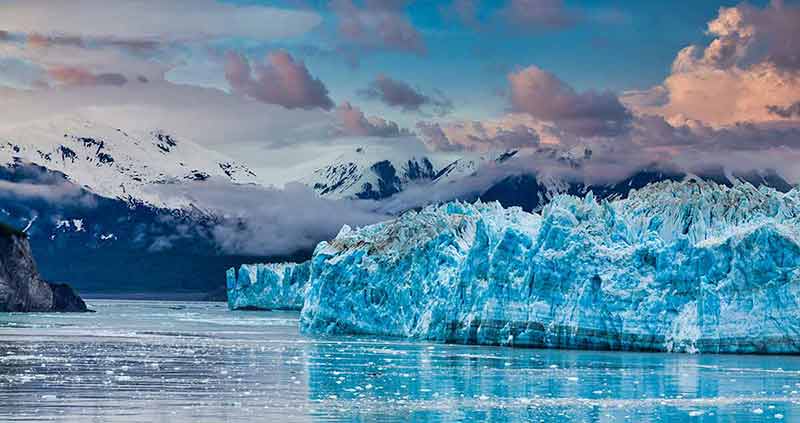
Wrangell – St. Elias National Park and Preserve is 13.2 million acres (5.3 million hectares).
It is home to the largest volcanoes in North America.
This park has a diverse population of birds that migrate to their breeding grounds each summer.
People travel to this park and preserve to spend time in the rugged backcountry and remote wilderness away from human civilisation.
Six ranger stations and visitor centres provide services to people between May and September.
Wrangell – St. Elias National Park and Preserve attracts adventurers, bird watchers and wildlife watchers to this scenic and diverse area.
National Preserves
Alaska is home to three National Preserves: the Noatak National Preserve, Yukon-Charley Rivers National Preserve and the Bering Land Bridge.
These preserves have diverse and abundant plants and animals, rich cultural and historical connections, and excellent recreational opportunities for visitors.
National Historic Areas
The National Park Service preserves the Aleutian Islands World War II National Historic Area for the tragic story it tells of the federal government forcing the native population of Aleuts to leave their homes, causing their villages to disappear.
This shameful episode in United States history is remembered here so that this type of event never happens again.
National Historical Parks
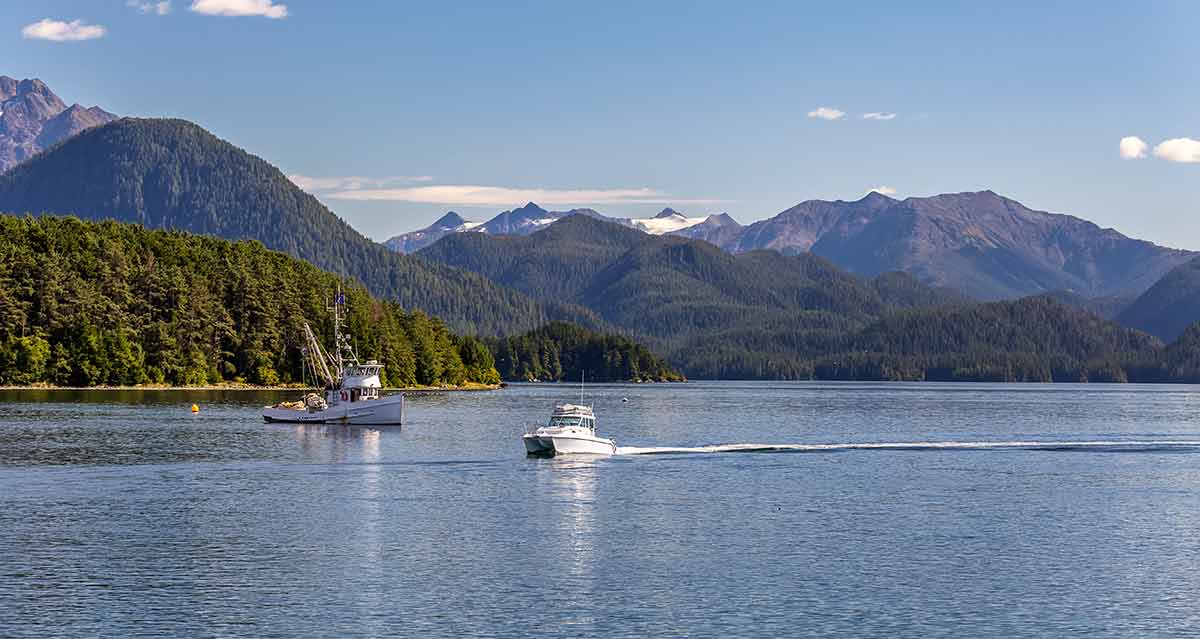
Two National Historical Parks are in Alaska. The Klondike Gold Rush National Historical Park tells the story of the thousands of people who descended on Alaska trying to find gold.
Many stories, trails, and artifacts help to tell the story of these people and the hardships they endured.
The Sitka National Historical Park tells the story of Russian colonialism in America.
Artifacts and interpreters explain the conflict between Russian traders and the indigenous people in this area.
National Heritage Areas
The Kenai Mountains-Turnagain Arm National Heritage Area contains a wealth of natural resources, cultural resources, and a rich history.
This Heritage Area helps the communities in the area while protecting the important diversity found here.
National Monuments and Preserves
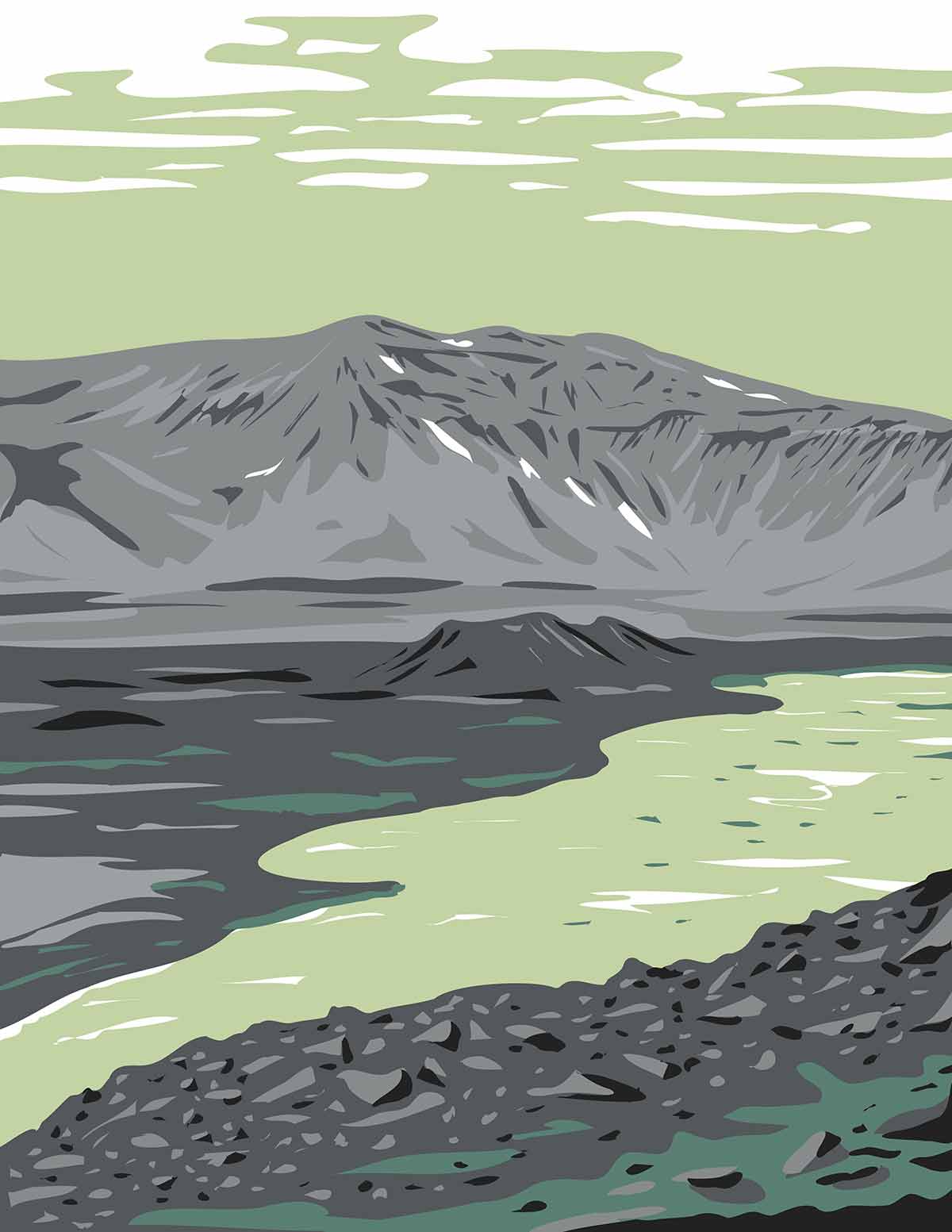
The Aniakchak National Monument and Preserve is the most remote place in Alaska, a wild area in a volcanically-active part of the world.
The river is popular for expert white-water rafters, and many opportunities to see wildlife exist within this national monument and preserve.
National Monuments
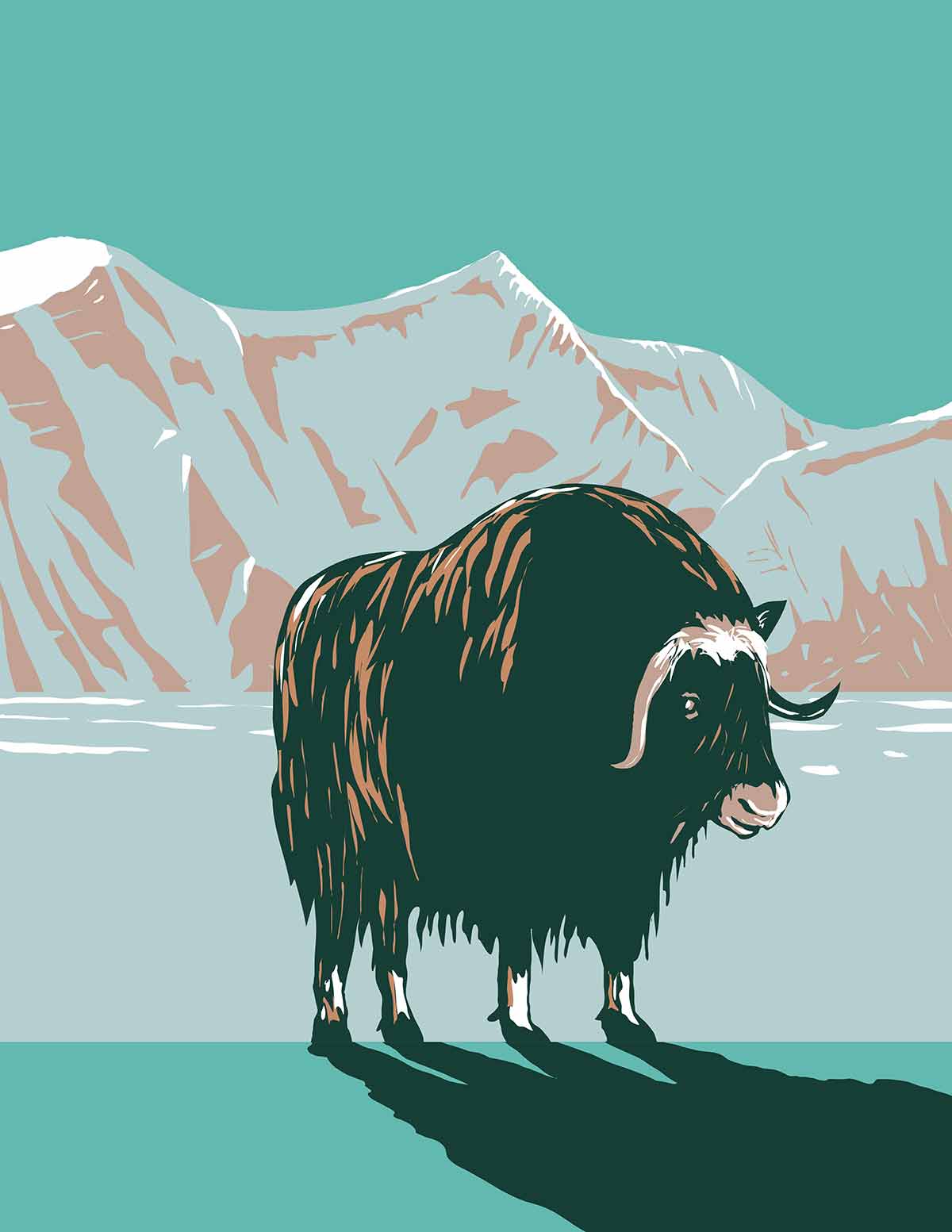
The Cape Krusenstern National Monument contains significant archaeological sites dating back thousands of years.
It also has diverse animals that utilise this area during the year. More than 150 birds migrate to this area to breed.
Native Alaskans continue to subsist on the land the way they have done for thousands of years.
This national monument protects this beautiful and unique place.
Wild and Scenic Rivers
Alagnak River
The Alagnak River contains 67 miles (108 km) of a designated Wild river inside Katmai National Park and Preserve.
It is a popular place for wildlife watching and salmon fishing.
The National Park Service manages this river inside the park and preserve.
Noatak River
The Noatak River is one of Alaska’s longest Wild and Scenic rivers, stretching 330 miles (531 km).
The river starts at the source in Gates of the Arctic National Park and Preserve and runs to the Kelly River in Noatak National Preserve.
This river drains the largest mountain-bordered river basin area in the United States, mostly devoid of human activity.
Popular activities on the river include floating, sightseeing, wildlife watching and bird watching.
Salmon River
The Wild section of the Salmon River is 70 miles (113 km) long and runs through the Kobuk National Park.
It offers excellent grayling fishing and large runs of chum and pink salmon.
Selawik River
The Wild section of the Selawik River is 160 miles (257 km) long inside the Selawik National Wildlife Refuge and is great for fishing, floating and wildlife watching.
It contains important nesting sites for aquatic birds during the summer breeding season.
It supports the Western Arctic Caribou Herd with more than half a million animals and is managed by the United States Fish and Wildlife Service.
Kobuk River
The Kobuk River, managed by the National Parks Service, flows through the Gates of the Arctic National Park and Preserve.
The Wild section is 110 miles (177 km) and popular for floating, with class 4 rapids in the upper canyon ⅓ of a mile (half of a km).
Class 2 and 3 rapids in the lower canyon make floating exciting.
This river offers fantastic grayling and trout fishing and has a sheefish run in August.
This river has been important to the native people for more than 12,000 years.
Alatna River
The Wild section of the Alatna River runs for 83 miles (134 km) inside the Gates of the Arctic National Park and Preserve.
This river contains beautiful scenery, cool geologic features, and plenty of wildlife watching.
John River
The Wild section of the John River runs for 52 miles (84 km) inside the Gates of the Arctic National Park and Preserve.
The river runs through a valley, an important migration route for the Arctic Caribou Herd.
Tinayguk River
The Wild section of the Tinayguk River is 44 miles (71 km) long and is within Gates of the Arctic National Park and Preserve.
This river is the North Fork Koyukuk River’s biggest tributary.
North Fork Koyukuk River
The North Fork Koyukuk River Wild section is 102 miles (164 km) long inside the Gates of the Arctic National Park and Preserve.
It flows through lush glacial valleys.
Ivishak River
The Ivishak River runs through the Arctic National Wildlife Refuge, where 80 miles (129 km) are designated Wild. More than 100 species of birds live here during the year in this river’s braided riverbed.
Wind River
One hundred forty miles (225 km) of the Wind River inside the Arctic National Wildlife Refuge is designated Wild.
The river area contains excellent wildlife watching in the boreal forest, where visitors can see grizzlies, moose, caribou and Dall sheep.
Sheenjek River
The Sheenjek River has 160 miles (257 km) of a designated Wild river inside the Arctic National Wildlife Refuge.
The Porcupine Caribou Herd overwinters along the river and is managed by the United States Fish and Wildlife Service.
Unalakleet River
The Bureau of Land Management manages the 80-mile (129 km) Wild section of the Unalakleet River.
The Iditarod National Historic Trail follows the river and is an important river for subsistence fishing and hunting.
The river contains an excellent salmon fishery for Chinook, pink, chum, and coho.
Grayling, char, and whitefish are also important for sport and subsistence fishing. Some travel here to hunt moose, caribou and bear.
Trappers along the river take marten, lynx, muskrat, beaver, fox and wolf for skins.
Andreafsky River
The Andreafsky River contains a 262-mile (422 km) section of a Wild river inside the Yukon Delta National Wildlife Refuge managed by the US Fish and Wildlife Service.
It isn’t easy to access but offers excellent fishing, bird-watching, and wildlife-watching opportunities.
Tlikakila River
The Tlikakila River has 51 miles (82 km) of a Wild river inside the Lake Clark National Park and Preserve. This glacial river has a scenic braided riverbed.
Chilikadrotna River
Eleven miles (18 km) of the Chilikadrotna River, a designated Wild river, flows inside Lake Clark National Park and Preserve. This popular rafting river contains rapids, excellent fishing, and scenic views. Visitors and locals often refer to this river as the Chili River.
Mulchatna River
The Mulchatna River contains 24 miles (39 km) of a Wild-designated river inside Lake Clark National Park and Preserve. This river provides important habitat for the Mulchatna Caribou Herd.
Aniakchak River
The Aniakchak River that flows within the Aniakchak National Monument and Preserve contains a 63-mile (101 km) section designated Wild. Only experts should attempt rafting on this river. Rafting starts from a volcano caldera and travels to the ocean in three to four days. This adventure is excellent for wildlife watching.
Gulkana River
The Gulkana River has 181 miles (291 km) of a Wild-designated section of river managed by the Bureau of Land Management. This river offers excellent fishing, bird watching, and wildlife watching.
Delta River
The Delta River has 62 miles (100 km) of river that is a mix of wild, scenic, and recreational sections also managed by the Bureau of Land Management.
Hundreds of archaeological sites are found along this river. It is popular for fishing, recreation, and wildlife watching.
The Nelchina caribou herd migrates through this river corridor.
Fortymile River
The Fortymile River contains 392 miles (631 km) of a mix of wild, scenic, and recreational river sections managed by the Bureau of Land Management. I
t has important cultural and historic sites along this river. It provides a nice place for fishing, wildlife watching, and floating.
Charley River
The Charley River runs through the Yukon-Charley Rivers National Preserve.
It has a 208-mile (335 km) section of a Wild-designated river. People use this river for excellent wildlife watching and float trips.
Birch River
The Birch River has 126 miles (203 km) of a Wild-designated river managed by the Bureau of Land Management.
It provides excellent recreational opportunities for rafting, floating, canoeing, fishing, hunting, trapping, hiking, and camping.
Beaver River
The Beaver River contains a 127-mile (204 km) Wild-designated section managed by the Bureau of Land Management.
It is excellent for fishing, wildlife watching and hunting.
This river is the longest float trip in the United States, covering 360 miles (579 km) of distance.
Nowitna River
The Nowitna River has a 225-mile (362 km) section of Wild river managed by the US Fish and Wildlife Service inside the Nowitna National Wildlife Refuge.
It offers great hunting, fishing, and floating. Many people travel here in summer to mine for gold along the river.
If you love exploring national parks, you might like to read:
- Wyoming National Parks Guide
- Nevada National Parks Guide
- Michigan National Parks Guide
- 5 Maine National Parks
- New Hampshire National Parks Guide
- 25 National Parks in Canada
- 17 National Parks in Argentina
- Tasmania National Parks
- 20 National Parks in Mexico
- 18 New Mexico National Parks
- 18 National Parks in Massachusetts
- 17 Colorado National Parks
- 4 Indiana National Parks
- 5 Nebraska National Parks
- 30 Virginia National Parks
- 9 New Jersey National Parks
- 8 National Parks in Arkansas
- 8 Alaska National Parks
- 13 Tennessee National Parks
- 6 National Parks in Louisiana
- 5 Illinois National Parks
- 7 National Parks in Oklahoma
- 7 National Parks in South Dakota
- 12 Alabama National Parks
- 5 North Dakota National Parks
- 8 National Parks in West Virginia
- 20 National Parks in Arizona
- 11 National Parks In Florida
- 8 Hawaii National Parks
- 6 National Parks In Idaho
- Texas National Parks Guide
- 9 California National Parks
- 11 National Parks In Georgia
- 7 National Parks In Missouri
- 5 National Parks in Minnesota
- 7 National Parks In Kentucky
- 8 National Parks In Montana
- 15 National Parks In Washington State
- 8 South Carolina National Parks
- 12 North Carolina National Parks
- 4 Wisconsin National Parks
- 20 National Parks In India
- 11 Oregon National Parks
- 5 Connecticut National Parks
- 27 National Parks In New York State
- 4 Iowa National Parks
- Yosemite National Park
- Zion National Park
- 21 National Parks in Pennsylvania
- 9 National Parks in Mississippi
- 5 National Parks in Rhode Island
- 9 National Parks in Taiwan
- 20 East Coast National Parks
- Guide To Winter in Yellowstone National Park
Plan Your Trip

Rent A Car – Find the best car rental rates at Discover Cars. They compare car hire companies to provide you with the best deal right now.

Find A Hotel – If you’re curious about this article and are looking for somewhere to stay, take a look at these amazing hotels.

